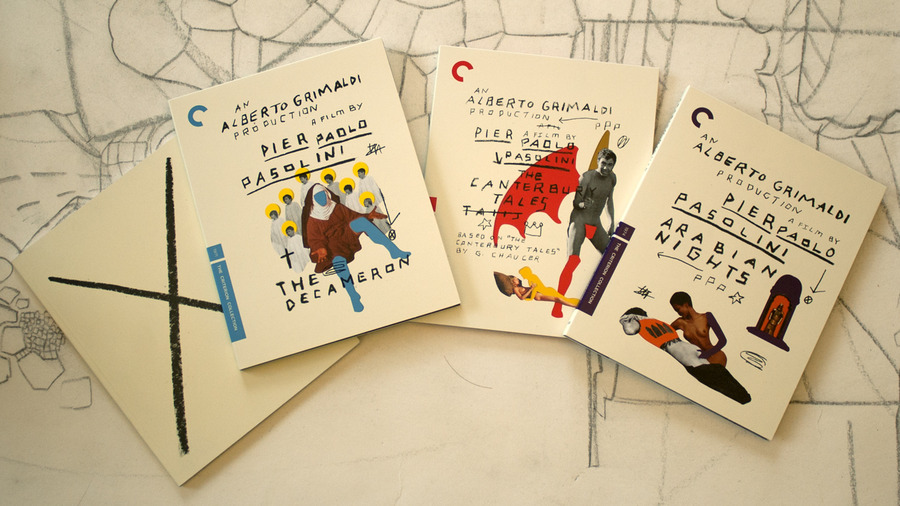So I wondered, how good could a film be that was written, directed, and produced by a woman whose only previous experience was turning out a couple of five-minute animated shorts–especially when this first feature-length film of hers was completed almost totally in her home, using flash animation and low-tech 2-D computer graphics? And how impressive could a film be that debuted on the Internet, then made it only to art houses in theatrical release?
Well, as it turns out, pretty damned impressive. “Sita Sings the Blues” is a delightful film that tells its story using equal measures of music and images, blending an animated, feminist revision of the Ramayana–an Indian epic poem that’s important to Hinduism–with an animated tale of the author’s break-up. In fact, this is billed as “The Greatest Break-up Story Ever Told.”
So many films are made each year that it’s almost impossible to create one that looks and feels absolutely different. But Nina Paley has done just that with “Sita Sings the Blues.” You wouldn’t think that the two stories would mesh together as well as the “Julie & Julia” narrative threads, but they do. And you wouldn’t think that Paley could throw together such a potpourri of art styles (ranging from traditional Indian painting and woodcuts to crude, pulsing drawings) and have it work, but it does. You also wouldn’t think that traditional Indian music could blend so well with the 1920s jazz songs of Annette Hanshaw, a contemporary of Bessie Smith’s, but somehow it all feels seamless. And just when you think that it’s audacious enough to throw all of this into the mix, Paley tosses in humor as well, and a generous portion–largely supplied by three contemporary Indians who do a running commentary on the film, as if it were a bonus feature and they were walking us through it all. Except that they’re depicted as Indonesian shadow puppets onscreen, and everything they say is illustrated as they speak–even a seemingly random reference to NASA. Postmodern? I’d say so. But without the postmodernist smirking and excessive self-consciousness.
“Sita Sings the Blues” seems more honest and innocent than that, despite the pro-feminist message. Its collage-style narrative is so driven by Indian music and images and by Hanshaw’s torch songs that it feels like one big, mellow, multi-media experience. And you don’t even have to know the Ramayana to get something out of it, because of those three Indians (Aseem Chhabra, Bhavana Nagulapally, and Manish Acharya) that Paley convinced to go into a sound studio and ad lib. They get some things wrong, they contradict each other, but ultimately they provide both humor and a logical reason for inserting information about the Ramayana that viewers need to know–at least for Paley’s somewhat abbreviated and slightly sanitized version.
Rama (Debargo Sanyal), a prince who is an incarnation of the god Vishnu, is exiled for a period of time from his father’s court, and his devoted wife, Sita (Reena Shah), herself an incarnation of the goddess Lakshmi, accompanies him into the dangerous forest where they make a life for themselves. In this version, Ravana, the king of Lanka (Sanjiv Jhaveri, who also rather deliciously gives voice to Paley’s ex-, Dave), is convinced that Sita is the fairest of them all and he sends a deer to distract Rama so he can kidnap her. A multi-headed villain, flying one-eyed bats, forest creatures, and a monkey king all factor in this morality play, in which Sita is rescued but, becoming pregnant, has her morality and faithfulness questioned. She’s thrown onto a fire to test her purity, and it’s this insulting questioning of the goddess of female purity that obviously incensed Paley, who saw in her own situation an ironic echo. In segments crudely drawn in a style reminiscent of the comic strip “Cathy” and flash-animated to pulsate, the parallel story set centuries later involves more realistic animated cityscape backgrounds of San Francisco and a plot that has Paley’s ex-, Dave, leaving for India and wanting her to come there because he doesn’t have the courage to tell her over the phone that he’s dumping her. In truth, these sections pale in comparison to the Indian narrative, but without them “Sita Sings the Blues” would lack the depth and texture than it has.
It’s the visuals and the animation itself, coupled with the music, that make “Sita Sings the Blues” a fun film to watch. Some sequences seem as if they could be Indian paintings come to life, while others are as stylized and random-looking as a Cartoon network show. Bizarre things happen, too, as when Rama shoots down the bats and beheads the bad buys and their trunks spurt blood like an arch for the hero and heroine to walk under. The characters themselves are drawn in near-caricature fashion, with Sita having big bulbous breasts and hips, and Rama all in blue with tiny legs and gigantic chest and arms.
For those who know Hanshaw’s work, here are the songs that are included: “Here We Are,” “What Wouldn’t I Do for That Man,” “Daddy Won’t You Please Come Home?” “Who’s That Knockin’ at My Door?” “Mean to Me,” “If You Want the Rainbow, You Must Have the Rain,” “Moanin’ Low,” “Am I Blue?” “Lover Come Back to Me,” “I’ve Got a Feeling I’m Falling,” and “The Song is Ended.” In additional to some original music that was commissioned for “Sita,” the film also includes several songs by Rudresh Mahanthappa (“Yiraha,” “I Like it When You Play the Blues,” “Balancing Act”) and two from MASALADOSA (“Born Shankar,” “Biryani”). And in apparent tribute to Bollywood and Hollywood, there’s an Intermission countdown that has characters going to the lobby and returning with snacks.
It’s a shame that the film has been getting more publicity because of controversies over copyright protest and a backlash from Hindu fundamentalists than because of the film’s content or style. But in fairness, I can’t imagine Muslims reacting much differently if someone had done a slightly feminized and humorous animated version of The Koran, and we all know what would happen if someone tried it with The Bible. And Paley says in a bonus-feature interview that the reaction from the Indian community has been all over the map. Some like it, some appreciate the art but don’t buy what she’s selling, and some are flat-out offended. Along the way, Paley became a crusader against confusing copyright laws, because the Hanshaw songs all but kept this film from ever going public. The Hanshaw-sung versions were public domain, but Paley discovered that the songs themselves (along with just about every other property that used to be in the public domain) is now under the control of giant corporations that don’t respond unless you hire a professional to deal with them. Even as she explains everything in the interview, I’m having a hard time wrapping my mind around it. But the bottom line, and the thing that burned her, is that anyone who wants to “cover” a song just pays a flat fee to the government. But if you want to add an image to it, you have to pay for “synch rights,” and those are administered by private corporations. And somehow, the local PBS station had a license that allowed Channel 13 to do an end-around. Don’t ask me how. I’m just glad they did. It would have been a shame for no one to have been able to see this film.
Video:
“Sita” looks great on DVD, with bright colors and only a modicum of filmic grain. It was presented in theaters on 35mm stock, and the transfer to disc seems to have been a good one. “Sita” is presented in 1.78:1 aspect ratio.
Audio:
Subtitles are in English, French, Italian, and (get this) LOLSpeak–the latter provided by the audience who viewed this on the Internet. Though it’s a modest Dolby Digital 2.0, Hanshaw’s recordings are so static-free that it feels like a purer and more robust mix. It really is a pleasure to listen to these digitally enhanced recordings from the Twenties in this animated context.
Extras:
Paley is so wrapped up in the free culture movement that she is artist-in-residence for QuestionCopyright.org, and she asked director Karl Fogel to handle the commentary chores with her. Not surprisingly, much of what they have to say deals with copyright issues. If that’s not your thing, then neither will this commentary track, because the art itself takes a back seat. That’s also the case with a 25-minute WNET interview, which shows Paley in front of the camera answering questions that largely deal with her copyright ordeal.
Other bonus features, aside from DVD-ROM content, are the movie trailer and a bonus short, “Fetch,” by Paley. Let’s just say that she’s come a long way. For more behind-the-scenes comments, check out the interview that DVD Town published.
Bottom Line:
Eighty-two minutes never passed so quickly. “Sita Sings the Blues” is a spellbinding film that charms with its quirkiness in almost every sequence. And despite the adult nature of the Ramayana, “Sita” is appropriate for older children because it’s handled in such a mild and inoffensive manner.


